
Today’s post is a tribute to the work of Arthur Erickson who passed away on May 20th, 2009 at the age of 84 in Vancouver. While Erickson created a substantial portfolio of civic, commercial and institutional work, today’s post will focus on his residential projects. Erickson’s wood framed homes pushed architecture into new territory in the Pacific Northwest and has influenced generations of architects since.
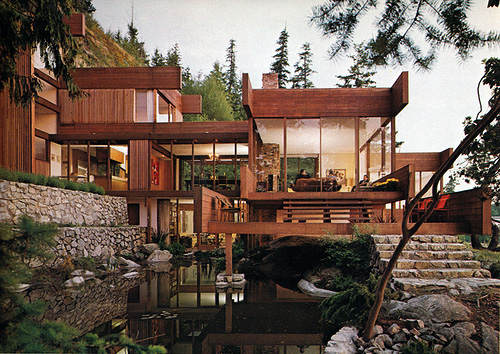
Erickson was quoted as saying “If you can design a house, you can design anything.” We’d like to think that this speaks to the complexity and serendipity involved in each residence. While each house is unique to the clients, budget, environment, and available technology, Erickson developed common strategies to navigate through the design process. These common strategies are fascinating to us for a number of reasons; it allows the process of design to be efficient amidst all the variables, it develops a visual language with each project, and it unites a population of projects with a collective vision (a thesis if you’ll allow us to get architect-y for a moment). Here is a breakdown of some of the strategies we find most compelling:
Emphasis of post and beam construction
It is said that Erickson was influenced by Native American dwellings with their simple and expressive timber frames. The differentiation between horizontal beams and vertical walls makes for a handsome composition in addition to being sensible in terms of physics, materials and methods.
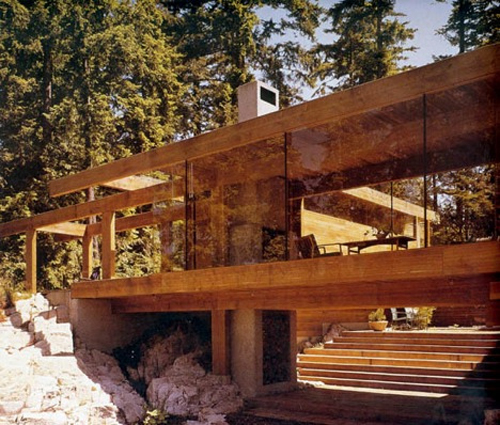
Smith House, photo by Ezra Stoller
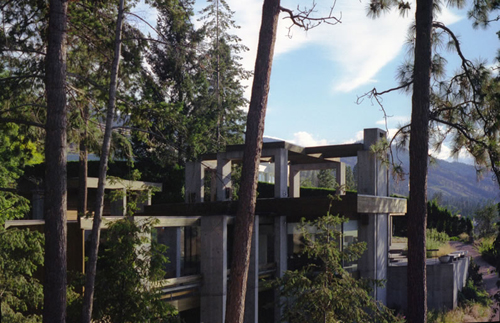
Craig House, photo by Geoffrey Erickson
Authenticity
These homes look like what they are doing, beams look like beams, walls look like walls. The materials reveal what they are in color, texture and physical ability.

Hillborn House, photo by Simon Scott
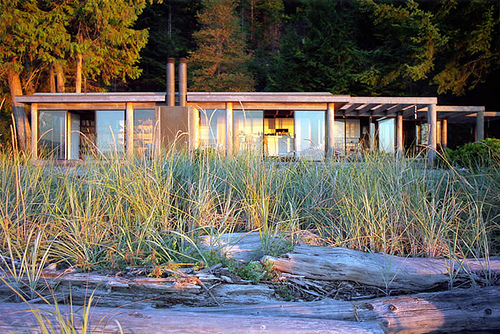
Keevil House, photo by Geoffrey Erickson
Variations of floor plane
Erickson’s most interesting houses use the ground as a datum to add variety. Within any given project the floor planes may be situated above, below and flush to the exterior grade. The floor may bridge over a crevasse or span an outcropping rock. The floor may resolve differences in the topography or call attention to irregularity. In a sense it puts the focus back on the phenomenal geography found in the Pacific Northwest.

Graham House, photo by Ezra Stoller
Cascading terraces
Often the play between floor structure and topography allows for hillside terracing in Erickson’s projects. The terracing creates more surface for vegetation and space to enjoy the outdoors. The terraced structures seem hug the landscape and maintain a modest architectural gesture.
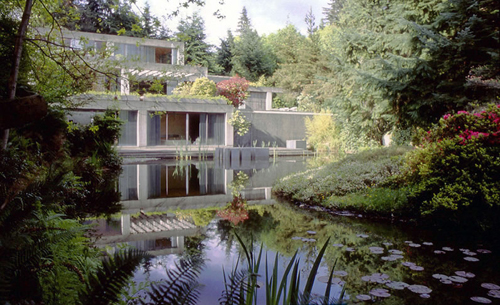
Helmut Eppich House, photo by Geoffrey Erickson
Changing perspectives
Because of the changes in floor plan and stepping of spaces the experience of volume and view in these homes must be extraordinary. Often, even the roof was composed to be viewed from above – every bit as important as an elevation of the home.

Graham House, photo by Ezra Stoller
Experience of light and shadow
The clean structures lend to crisp shadows; the experience of light and shade changes over the course of a day. At night the large expanses of glass glow like lanterns.
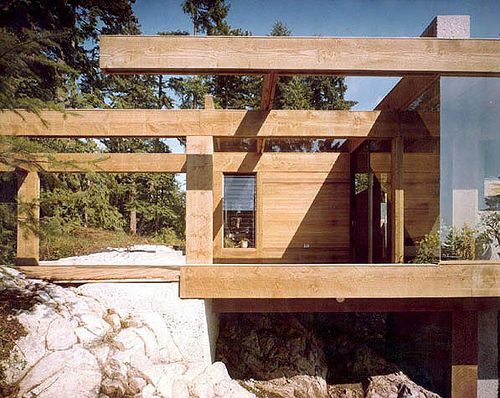
Smith House, photo by Ezra Stoller
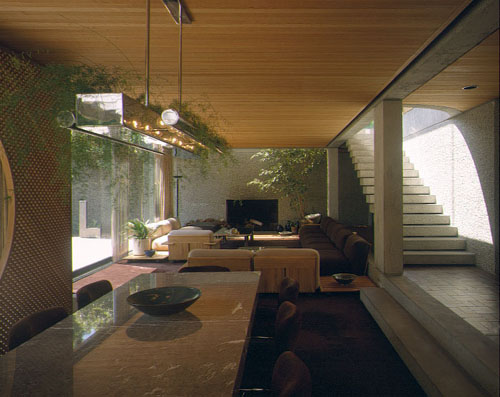
Helmut Eppich House, photo by Roger Brooks
Water as a key element
Erickson’s calm pools enhance the peacefulness of his projects. It also creates an interesting relationship between the smooth, still surface of the water and the undulating topography.
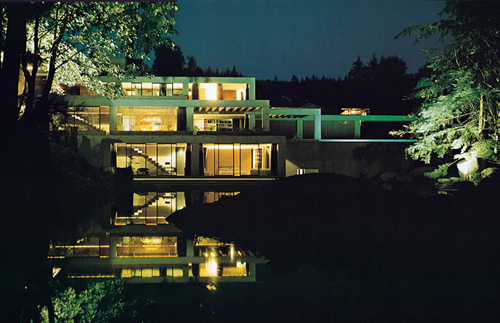
Helmut Eppich House, photo by Ezra Stoller
Transparency
The walls of glass, so vital to these projects, allow nature to be the focus. In the dark northwest winters they also allow complete infiltration of light to the interiors. Achieving such a clarity of built-form in the northwest is challenging. The seismic zone requires large continuous shearwalls, the energy code limits the amount of glass and most window manufacturers are hesitant to warranty corner windows.
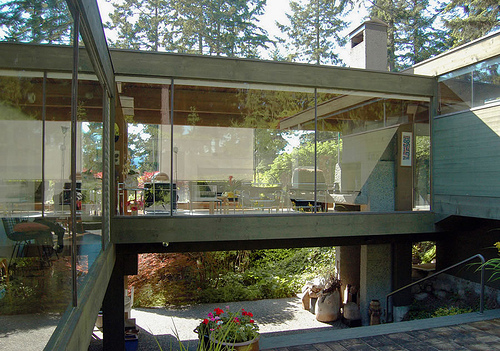
Smith House, photo by Steven Zhen Wang
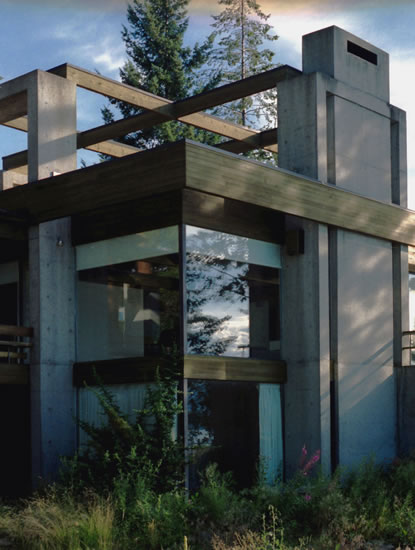
Craig House, photo by Geoffrey Erickson
Defining exterior rooms
Erickson’s projects do a brilliant job of making outdoor rooms. The shape of the house or strategic placement of posts and beams can make outdoor spaces intentional and comfortable.
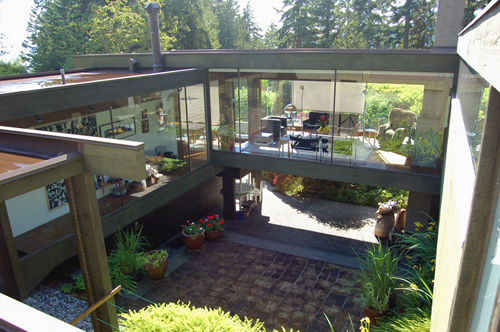
Smith House, photo by Steven Zhen Wang
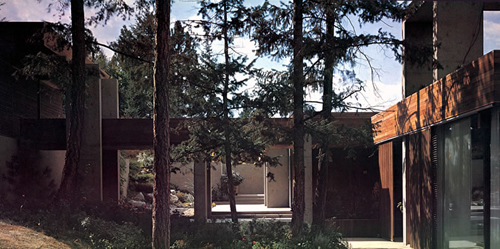
Craig House, photo by Simon Scott
So there you have it – a few aspects we greatly admire about the work of Arthur Erickson. His projects are timeless examples of Pacific Northwest modernism and his lessons will be well remembered. Cheers to the life and career of a master architect.
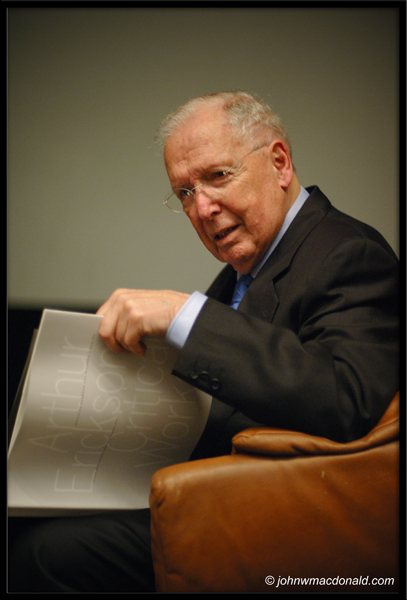
Photo by John MacDonald





